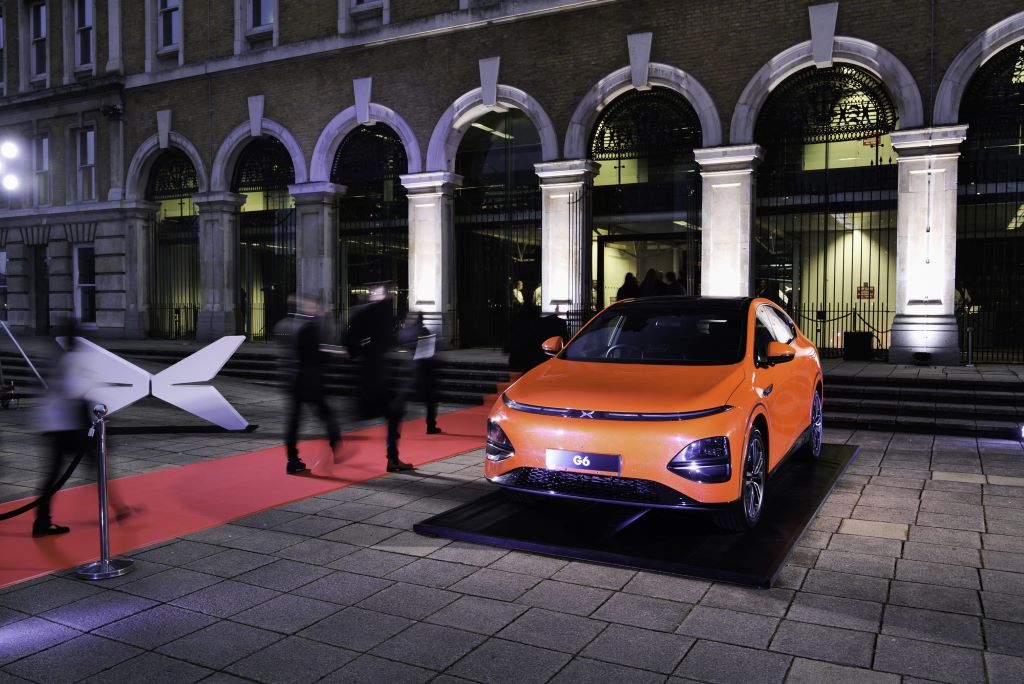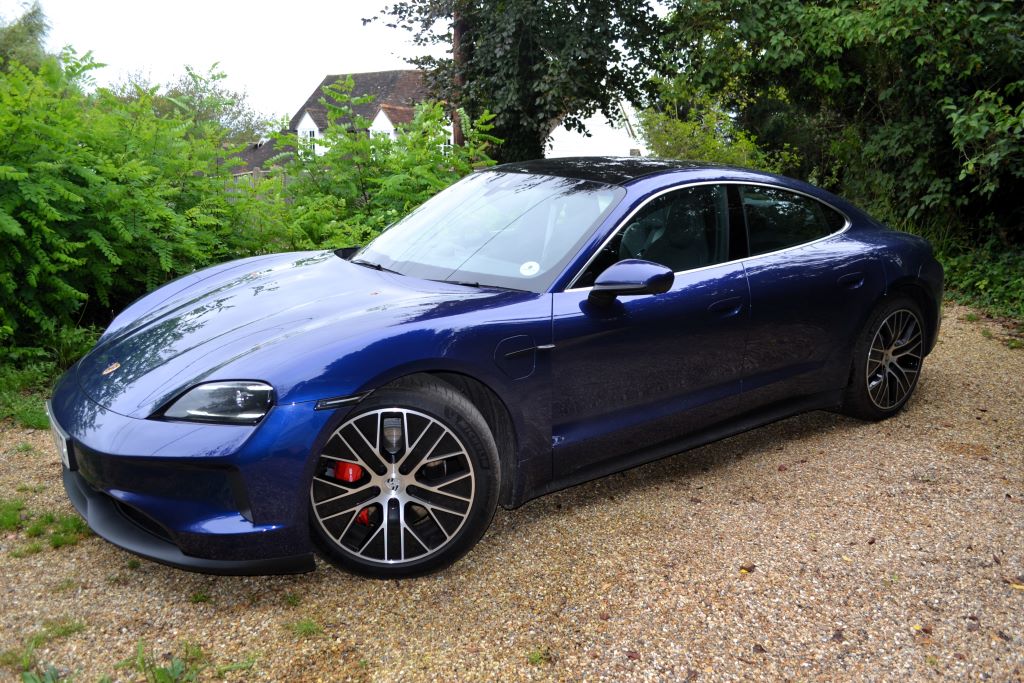Feature 14 min read
All the biggest EV news from the IAA Munich Motor Show
This year’s IAA Munich Motor Show is the biggest such event in Europe and the most important since Covid restrictions were eased throughout the continent. It’s evident that manufacturers have been saving themselves for this with a raft of concepts and previews of forthcoming production EVs on display.
It’s fair to say that the show has been concept-heavy. We’re at a point in time where manufacturers are busy creating new electric models which will be launched before 2030 – the date when many are aiming to be EV only – so these models are being teased as concepts before becoming production-ready vehicles. Happily, there are a few near-production ready cars amongst the glut of EVs at this year’s show, too.
We’ll take you through the biggest reveals of the show and will update this story as new information comes out.
Audi grandsphere and skysphere concepts
Audi has taken IAA Munich as an opportunity to showcase a couple of striking concept cars which are designed to preview the direction the brand will be taking over the next decade. We’ve already written about the skysphere two-door, two-seat concept. The grandsphere carries on the ‘sphere’ concept, which creates a vehicle around the interior and the occupants, and applies it to a four-door GT of a similar size to the A8. Doors are pillarless and the rear doors open rearwards and inside, everything is designed to be occupant-centric, including adjustable individual seats and separate entertainment for rear passengers.
Level 4 autonomous driving means that the ‘driver’ would be able to relax and enjoy not only the journey, but the interior. Up-front, there are no screens. Instead, information and infotainment is projected onto the car’s wooden surfaces. Gesture, voice and handwritten input provide the control interfaces. Motivation comes from a 710bhp powertrain and a 120kWh battery with a maximum charging rate of 270kW. Obviously a concept at this stage, the grandsphere has more realistic production potential as the next A8 than the shape-shifting skysphere.
BMW i4 and iX and e-bikes
BMW is using the show to publicise its two high-profile, new-generation EVs: the i4 and iX. As such, we’re not learning anything new about these cars but their importance to the brand cannot be underestimated as it moves towards electrification in the early 2030s. Find out more about the i4 saloon and iX SUV.
BMW’s transformation into a low carbon brand doesn’t just pertain to cars; it is also innovating e-mobility solutions. Making its debut at the IAA is the BMW i Vision AMBY, an e-bike capable of up to 37mph, but also limited via an app to lower speeds and pedal assistance depending on where it’s being ridden. In addition, the Motorrad Concept CE 02 is an electric bike suitable for those 16 and up, designed to be neither scooter nor motorbike, but an entirely new concept. Finally, the i Vision Circular is a concept car which is designed and built around a totally circular economy of recycling.
CUPRA Tavascan Extreme E concept
CUPRA has been at the forefront of e-motorsports with entries in the ETCR series as well as the Extreme E rallying series. The company has now unveiled an Extreme E-spec car in the shape of the forthcoming all electric Tavascan SUV road car. CUPRA is calling the Tavascan Extreme E Concept the “next stage in its Extreme E adventure, which also hints at the design language to be used in the future series production CUPRA Tavascan”. Innovative techniques such as 3D printing have been used to make some components, enabling the team to manufacture or modify them quickly and easily. Under the skin, the Tavascan Extreme E Concept uses the regulation 54kWh battery and powertrain enabling it to hit 62mph in around four seconds. We’ll be able to watch it in action soon.
CUPRA UrbanRebel
CUPRA’s UrbanRebel, which is making its public debut at the IAA Munich International Motor Show, is a concept car that looks like something you’re more likely to find as a bonus car on a video game. The concept has an equally conceptual powertrain which would offer up a maximum power of 429bhp with continuous power of 335bhp, enabling it to hit 62mph in 3.2 seconds – if it were ever built in this guise.
Under the undoubtedly interesting bodywork is the MEB platform and general foundations of the car that will be launched in 2025 with the target of a £17k bottom rung price tag. It’ll essentially be CUPRA’s version of the VW ID.2. If you can use your mind’s eye to peel back the wings, there are hints of where CUPRA wants to go with its future design direction. At the front is a so-called ‘shark nose’ with new triangular signature headlights. Blacked out A-pillars give the effect of a floating roof, which CUPRA reckons mimics the look of a racing helmet. You can be the judges of that.
E-Legend EL1
The Audi Quattro is a design and performance icon, and it’s one that niche EV maker E-Legend has decided is worth reimagining as a limited run (and very expensive) EV. Visually, the EL1 looks like a modernised version of the Audi Sport Quattro – squat, square and with flared arches and louvres aplenty. According to E-Legend, the EL1 weighs in at just 1650kg, despite a 90kWh battery and tri-motor powertrain that delivers a total of 816bhp and 0-62mph in 2.8 seconds. It’ll even do a claimed 264 miles on a charge and can be juiced at 300kW.
Were this thing £50k, the queue would stretch from London to Ingolstadt. However, E-Legend will be building just 30 examples and they’re going to cost (effectively) £1m each. If they manage to flog all 30, the company is planning to reimagine two more as yet unknown classics.
Great Wall Ora Cat
Better known for low-cost pickup trucks, Great Wall is a big brand with a lot of clout in China. Ora is one of its brands in its native country and Great Wall is planning to launch it in Europe in 2022, with the ‘Cat’ being the first car to get here. Don’t be too put off by the fact that the car’s platform is called ‘Lemon’; Great Wall has a lot of experience in building EVs and with the Cat, it will go head-to-head with B-segment cars like the Corsa-e, e-208 and Renault ZOE. A 169bhp, 184lb-ft motor and maximum range of 249 miles trumps the aforementioned cars and you can bet that it will undercut them in price. Ora is also promising high levels of technology. Consider us intrigued.
Kia Sportage and EV6
Kia is debuting two electrified models at IAA Munich: the new Sportage PHEV and the EV6 – its first purpose-built EV. The latter of these we’ve already covered in detail, so we’re now simply awaiting its launch in early 2022. The new Sportage PHEV, on the other hand, is all new and has been designed specifically for the European market. It combines the tried-and-tested 1.6-litre T-GDI petrol engine with an electric motor for a total power of 261bhp. A 13.8kWh battery should see 30+ miles to a charge. To look at, it’s a notable step forward over the previous car and the interior looks like it will gain the latest technology from the company. We’ll bring you a full story in due course.
Mercedes-AMG EQS
If you’re not content with the top-spec Mercedes-Benz EQS 580s top power output of 516bhp, the AMG version is going to be the car for you. The catchily-named EQS 53 4MATIC+ comes with 761bhp and 752lb-ft of torque, and if that’s a bit much a standard AMG EQS 53 dials things back with ‘just’ 658bhp and 701lb-ft, enabling it to hit 62mph in 3.8 seconds. Both cars will go head-to-head with the likes of the Porsche Taycan and Audi e-tron GT, albeit the Porsche and Audi should win out dynamically, whilst the AMG will take the crown for luxury thanks to being based on the EQS.
The AMG EQSs will also win out on range thanks to a 107.8kWh battery which gives the car a maximum range of 360 miles. Maximum charging of 200kW is fast, albeit slower than rivals. Suspension has been revised to improve dynamics and includes rear-axle steering to help minimise the inertia of over 2600kg of car. It’ll go on sale later this year.
Mercedes-Maybach EQS Concept
Don’t worry; this is just a concept for the time being, though what would be Maybach’s first series production electric car could be in production in the next couple of years. Based on the EQS architecture, but sporting a distinctively ostentatious SUV-type body, it’s fair to say that Maybach has left its mark. Whether that’s a good one or not is up to you, but also probably irrelevant. Maybachs were never good looking, but they’ve always been highly crafted and luxurious.
The Concept Mercedes-Maybach EQS is no different. Festooned in chrome, a two-tone paint job and a grille that resembles a blue whale’s mouth, it’s going to get you noticed. Inside, it gets the same MBUX operating system as the regular EQS and also carries over things like the seating setup designed to mimic fist-class travel where a chauffeur does the hard work. In fact, there’s a chauffeur package for those with no intention of ever driving the thing.
Mercedes-Benz EQE
Sitting beneath the EQS in the Mercedes fully electric EQ range, the EQE is the next luxury electric saloon from the brand and will go head-to-head with the likes of the BMW i4 and Polestar 2. Based on the brand’s EVA2 platform, it carries many of the EQS’ design elements over with Mercedes’ ‘cab-forward’ design which is carried across its new, electric saloons. The black and blanked off grille houses sensors and also helps make the EQE slippery through the air – something that Mercedes is hammering home.
Inside, the latest MBUX operating system is interfaced via a wrap-around ‘Hyperscreen’ display including a 12.3 inch passenger display. A floating centre console replaces the old transmission tunnel. Two powertrains will be offered to start with albeit we only have details of the EQE 350, which has 288bhp and 391lb-ft sent through the rear wheels. Power comes from a 90kWh battery which enables a range of between 339 and 410 miles on the WLTP cycle and it can be charged at a maximum of 170kW. The EQE is due to launch in spring 2022.
Mercedes-Benz EQG Concept
If resto-mods are one of the major themes in EVs, then Mercedes has done its own version with the EQG Concept – an electrified version of an SUV that’s barely changed since the 1970s. Of course, with the EQ variant we’d expect Merc to do a bit more than sling an electric powertrain on an outdated chassis, but we’d be wrong. The EQG uses a ladder chassis with independent front suspension and a rigid rear axle. It’s a setup that works off-road, even though few will find their way out of the city.
Where the EQG Concept does come into the 21st century is in the wheel-mounted motors which enable far greater and more effective distribution of traction, as well as huge torque and power. A two-speed gearbox would provide high and low-ranges. Styling-wise, the EQG Concept is broadly just a modernised version of the old car with an updated face, bespoke wheels and charging apparatus in the spare-wheel carrier. It’s due to become a production model in 2025.
MINI Urbanaut
We didn’t hold out a huge amount of hope that the MINI Urbanaut would ever make it off the drawing board and into a mock up form, let alone production, However, MINI is presenting a fill-size version of the Urbanaut at IAA Munich which raises the hopes of the quirky MPV eventually hitting the road. That won’t be any time soon, and we would expect that many of the visual and experiential elements in the concept would be watered down, but if the flexible interior is maintained, it’d be a funky and different direction for the MINI brand.
Polestar 2 and e-bikes
Polestar has used the IAA Munich Motor Show to debut new versions of its popular Polestar 2. An entry-level, standard range, single motor car joins the range at £38,680. A long range, single motor versions will cost from £41,700 and a dual motor version will cost from £44,280. At the same time, Polestar is expanding into 30 global markets, having already doubled its presence from nine markets to 18 during 2021. These will predominantly be in the Middle East.
Like BMW, Polestar is using IAA Munich to show off e-mobility solutions such as the limited electric motorbike which it has created in collaboration with e-bike maker, CAKE. Called the Makka – Polestar Edition by CAKE, it’ll go on sale in Sweden, Germany, Norway, the UK, Netherlands and Switzerland initially. Also built in collaboration with CAKE is the Re:Move – an electric cargo scooter capable of carrying 180kg at up to 15mph.
Porsche Mission R
It’s not going to become a road car, but the Mission R is Porsche’s version of a customer motorsports car of the future. Comparatively lightweight and packing electric architecture that runs at 900 volts, the Mission R has a peak power output of 1072bhp and 670bhp of continuous power in race mode. Ultra-fast charging means 80 per cent can be reached in just 15 minutes, whilst under braking the car can recuperate up to 800kW of energy to help recharge the 82kWh battery. Efficient oil cooling for the battery and motors means that performance is maintained, no matter how hard the car is driven. At race pace, running duration is between 25 and 40 minutes.
Škoda Enyaq Coupé iV
Following in the footsteps of other VW Group brands like Audi, Škoda is launching a Coupe version of its Enyaq iV SUV. It’ll be available with effectively the same interior features and the same powertrains as the standard Enyaq iV, comprising two battery sizes – 58kWh and 77kWh – and three power outputs of 177bhp, 201bhp and 261bhp. The two lower power versions are rear-wheel drive, and the top-spec, 80x version has the dual motor all-wheel drive setup.
The new body shape has made the Enyaq Coupe even more slippery than the standard car, with a drag coefficient of just 0.247 which has helped to squeeze out 332 miles from the 77kWh battery and 201bhp rear-drive combo – up 16 miles from the standard SUV. Despite the sloping roofline, boot space is still considerable at 570 litres. You’ll be able to order one in early 2022.
Volkswagen ID. LIFE
The latest instalment in the ID. Line-up has been released as a concept called the ID. LIFE but is, to all intents and purposes, the new ID.2. Based on the same MEB platform as the ID.3 and ID.4, the ID. LIFE is a small, urban-focussed EV which shares more than a few design elements with the Honda e. Unlike the Japanese car, the Volkswagen will be front-wheel drive and the first MEB-based car to gain this configuration. It will be almost hot hatch-like in its most powerful form, with 230bhp giving 0-62 in 6.9 seconds. A 57kWh battery will enable it to travel 250 miles on a charge.
Inside, a flexible interior will seat five comfortably, but also enable seats to be folded and stowed to create spaces such as a ‘cinema’ which uses the in-car tech to project images (whether this makes production is TBC) and even a bed. A range of connectivity with smartphones and tablets enables users to integrate their personal device with the car’s controls and systems. The production version of the ID. LIFE, likely badged as the ID.2, will be on the road in 2025 with a target entry price of £17k.
Volkswagen ID. X
So far the only ‘hot’ EV in VW’s range is the ID.4 GTX which is fine, but performance SUVs still rub physics up the wrong way compared to equivalent saloons and hatchbacks. Earlier this year, VW boss Ralf Brandstatter revealed the ID.X concept on his LinkedIn page and it looks like it’ll become a ‘hot’ GTX badged ID.3 with essentially the same powertrain as can be found in the ID.4 GTX. Speaking to Autocar at the show, he’s confirmed that the ‘X’ is going to make production sometime in the next year or so. Power is being touted as topping 329bhp and thanks to a 200kg weight saving, 0-62 comes up in 5.3 seconds. From there, we’re expecting a full-fat ‘R’ badged ID.3 in 2024 which should pack even more punch.














































1024px.jpg)



Comments (0)
Be the first to write a comment
Login/ Signup